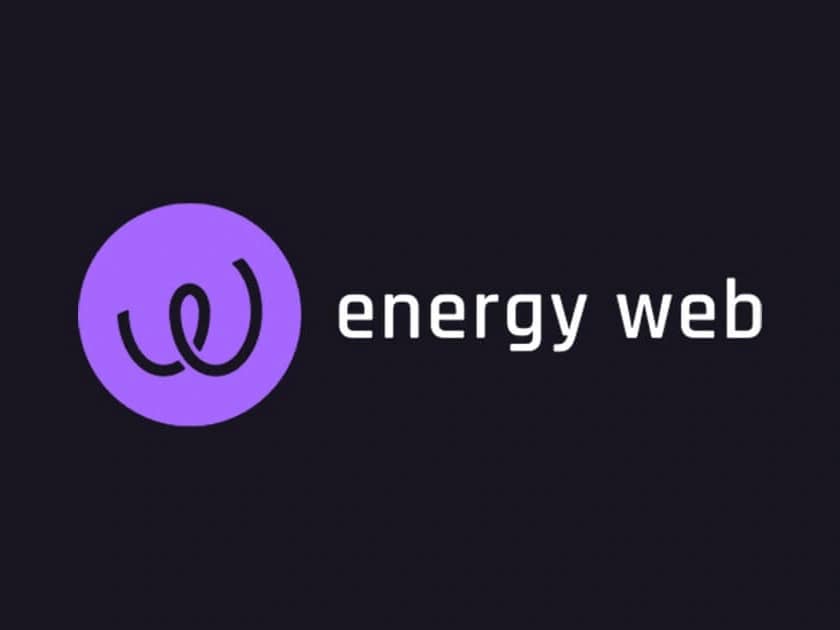Energy Web
Energy Web(成立于 2019 年 6 月)是 Energy Web Chain 的原生代币。Energy Web 是以太坊Ethereum 虚拟机 区块链上的一个开源、公共、权威证明,专门设计用于支持能源领域的企业级应用程序。[4]
Energy Web 基金会
Energy Web 成立于 2017 年,是一个全球性的、会员驱动的非营利性、以客户为中心的基金会。Energy Web 通过一个开源的、去中心化的区块链平台加速能源转型,并在 2019 年年中推出了其 Web Chain。该组织的存在是为了通过构建和推广围绕区块链技术构建的开放、去中心化的软件基础设施,从而促进能源领域的价值创造。其目标是:
- 开发一个由用户、应用程序开发人员和基础设施提供商组成的生态系统,
- 并共同努力,识别和评估区块链在能源领域的用例,
- 构建一个开放源代码的 IT 基础设施,在此基础上可以实施这些用例,
- 教育监管机构和其他利益相关者,并向标准化机构提供意见。
概述
Energy Web Token 于 2019 年 6 月 16 日推出,被认为是可再生能源市场的代币。EWT 是 Energy Web Chain 的实用代币。Energy Web Token 是 Energy Web 去中心化操作系统 (EW-DOS) 的一个代币化功能。该代币保护网络免受故障影响,还通过交易费用和区块奖励来补偿验证者,并可用于支付简化和增强 dApp 的服务。[1]
EWT 是世界上第一个专门为世界能源领域量身定制的商业级区块链平台。Energy Web Chain 的每一项设计决策都经过深思熟虑,以满足能源领域独特的监管、运营和市场需求。例如,公共的、权威证明链与允许的验证者相结合,可以降低网络的能源消耗,提高整体速度和可扩展性。它还有助于获得监管机构和政策制定者的认可。[3]
Energy Web Chain
EW Chain 是一个公共区块链网络,对所有公用事业公司、用户和设备开放。凭借与公共以太坊相同的虚拟机,开发人员可以开始编写智能合约和去中心化应用程序 (DApps),而无需额外的学习曲线。企业级 EW Chain 具有高可扩展性、低交易成本和低能源消耗。[4]
EWT 如何运作?
与大多数公共区块链一样,EW Chain 具有原生的一层实用代币,即 Energy Web Token (EWT)。EWT 作为原生代币,是其平台协议固有的,具有两个主要目的:安全性和验证者补偿。总共创建了 9000 万个 EWT 来运营 EW Chain。像 EWT 这样的实用代币的价值来自于网络用户从使用它中获得经济利益,并且愿意为这些利益付费。通过将 EWT 形式的经济价值附加到流经公共网络的所有交易中,该网络还可以免受各种攻击媒介的侵害。[2]
安全性:该代币保护网络免受交易执行(例如无限循环)或不良行为(例如垃圾邮件)的错误行为(有意的或无意的)的影响。使用的机制与以太坊类似。向 EW Chain 提交交易的帐户会根据执行交易的计算工作量收取交易费用。该工作量由称为“gas”的计算工作量的代理来估计。EW Chain gas 费用估算与以太坊主网相同。
验证者补偿:来自交易费用和区块验证奖励的 EWT 用于补偿验证者运行节点的成本(例如,服务器的资本投资、高速互联网连接、运营成本)。用户和应用程序开发人员无需在其应用程序中使用 EWT,只需支付 EW Chain 上的交易成本即可。他们可以使用加密货币或法定货币,以及特定于其应用程序的二层代币。EW Chain 支持所有以太坊智能合约,因此支持所有可在以太坊上部署的二层应用程序代币。[2]
Energy Web Token 交易
要交易 Energy Web Token,用户需要先从任何大型交易所购买比特币(或以太坊)来购买 EWT 代币,然后转移到提供交易该代币的交易所(例如 BitMart)。[4]
购买 Energy Web Token
要购买 Energy Web Token,用户应考虑以下步骤:
- STEP-I(用法定货币购买代币):用户需要从一个易于购买的安全平台购买任何主要的加密货币(BTC 或 ETH)。例如,使用 Coinbase(因为此交易所平台接受法定货币),您可能需要注册,然后按照了解您的客户 (KYC) 流程进行操作,然后添加付款方式(信用卡/借记卡或使用银行转账)并购买加密货币(BTC 或 ETH)。
- STEP-II(将加密货币转移到 Altchain):获得加密货币(比特币/以太坊)后,用户已经为交易做好了准备。由于 EWT 是一种山寨币,用户需要将其代币(BTC 或 ETH)转移到可以交易 EWT 的交易所,例如 BitMart(因为它是交易山寨币的常见交易所,并且具有可交易的山寨币对)。
- STEP-III(将加密货币存入交易所):用户应将其主要加密货币(BTC/ETH)存入其交易所(例如 BitMart),之后一旦存款完成,将收到来自 BitMart 的确认通知。然后用户终于可以购买 EWT 了。
- STEP IV(交易 EWT):例如,使用 Bitmart,用户需要转到“交易所”,之后会出现一个页面,用于将所选加密货币(BTC 或 ETH)交易为山寨币。用户可以选择任何交易对(即 BTC/EWT 或 ETH/EWT),并且可以看到所选交易对的价格图表。选择交易对后,用户可以输入任何金额,或者通过单击百分比按钮来选择要存入购买的 BTC/ETH 的哪一部分。完成确认后,用户可以单击“购买 EWT”,他们将获得 Energy Web Token。
- STEP V(将 EWT 安全地存储在硬件钱包中):有几个可用的选项允许用户与 Energy Web Chain 交互并存储 EWT,其中一些选项包括 MyCrypto、Metamask、MEW (MyEtherWallet) 和硬件钱包,例如 Ledger 和 Trezor。在 Energy Web Chain 上,已部署了一个基于 Web 的自定义钱包 - MyCrypto 钱包(基于开源),并且已预先配置为连接到用户的 Volta 测试网络和生产 Energy Web Chain。它已经过 Ledger 和 Trezor 等硬件钱包的测试。
支持的交易交易所
Energy Web Token 可用于在以下交易交易所进行交易:
- KuCoin
- BitMart
- Liquid
合作伙伴关系
某些组织与 Energy Web 建立了合作伙伴关系,其中一些是:Zytech Group (Zytech)、东京电力公司控股公司、Centrica plc、Elia、Engie、Royal Dutch Shell plc、Sempra Energy、SP Group、Statoil ASA、Stedin 和 TWL (Technical Works Ludwigshafen AG)。他们的支持还侧重于加速区块链技术在能源领域的商业部署。这种支持为 EWF 提供了第一轮 250 万美元的资金。[2]
区块链上的能源的未来
电力的未来在于以客户为中心、低碳的解决方案。这意味着可再生能源(尤其是太阳能和风能)以及对客户所在地“电网边缘”技术的投资,例如屋顶太阳能光伏、电动汽车和智能恒温器。[1]
在这种背景下,区块链技术——尤其是 Energy Web Chain——为多个并发的、相互竞争的行业颠覆路径提供了一种解决方案。正如 EWF 的附属网络所证明的那样,该链已经引起了全球的广泛兴趣。随着 EWF 在实时 Energy Web Chain 上部署商业解决方案,未来距离现实只有一步之遥。
